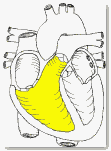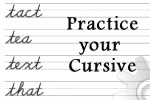The Research Paper
Some preliminary knowledge that the student should know before attempting a research paper:
Must know how to use the library.
Must have learned how to use reference materials such as dictionaries and encyclopedias.
Must understand and be familiar with making outlines.
Must have experience in: writing sentences, writing paragraphs, writing short essays, and proofreading.
The first steps to making a research paper are:
1. Selecting and LIMITING the subject
2. Making a preliminary bibliography
3. Making a skeleton outline
4. Finding useful passages
5. Writing the paper
6. Making the final bibliography and the final outline
*tip Select a subject that is interesting, is adequately treated in your library and is not too broad.
1.) Selecting and LIMITING the subject: Nothing
takes the place of allowing the student to choose a subject that interests
him. The student can go to the library and follow up on his special
interests. Limit the subject once it is chosen. That means, instead of
researching the Civil War, limit it to one battle ... and this can be
limited further by researching the effect of that one battle. Basically,
LIMIT the subject to a very narrow field.
2.) Making a preliminary bibliography: Once the
subject is chosen, then go to the library (preferably a university or
college library) armed with 3 x 5 index cards, a pen or pencil. Using the
resources available (card catalogs, the librarian, encyclopedias,
periodicals, etc.) find about a dozen of the most promising books,
periodicals, encyclopedias, etc. Write one title on each index card (these
are your bibliography cards) you may also wish to write the call numbers
on the cards.
3.) Making a skeleton outline: Next read one or
two of the brief treatments of the subject, perhaps from an
encyclopedia make a rough outline. Of course this outline won't be
complete, and it will change a great deal as you learn more about your
subject. This outline will serve as a plan. If you are writing about
sewing machines, then this first rough outline may look something like
this:
I. Knowing your sewing machine
II. Starting to sew
III. Checking performance problems
IV. Caring for the machine
As you can see this is just a skeleton of an outline. As you learn more
about your subject your outline should be improved and expanded.
4.) Finding useful passages: Very seldom is a whole
book or even a whole article useful as subject matter for your research
paper. You must use many resources about the subject matter that you will
include in your paper. Most stuff you will reject. You must learn to scan
the pages for the useful passages. Take notes on 4 x 6 index cards. Each
card should contain a heading to indicate where it will fit into the
outline. If you are making footnotes in your research paper then the card
should have, at the bottom, the source from which the information came.
The notes that you take from your resources should be written in your own
words.
I'm sure that steps 5 and 6 are self explanatory.
Hello Visitor!
I am currently working on this website to add to its ginormousness. Thank you for visiting, and please subscribe yearly to access my many printable files! Donna Young
May 13, 2021

 Printable Files and Quiz
Printable Files and Quiz The Half-Size Dated Block Planner
The Half-Size Dated Block Planner Color Names: Tracing, Coloring, Writing
Color Names: Tracing, Coloring, Writing


